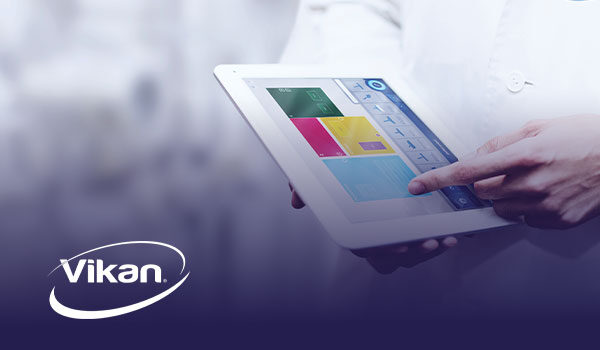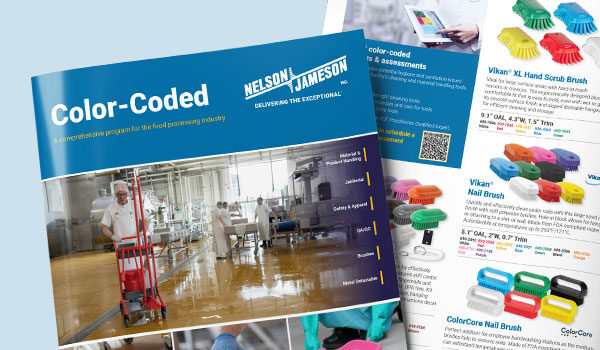
Color coding is an ongoing initiative. Meaning no matter where your organization may be in its color-coding journey, there is always something new to learn. But every journey has a beginning. And whether you’re new to the food manufacturing industry or the plant itself is new to the industry, Nelson-Jameson has a simple breakdown of color coding for food, dairy, and beverage manufacturers.
Want to go deeper? Check out our complete guide to color coding and see our buyer’s guide to color coding in food manufacturing here.
Let's begin with the question: "What exactly is 'color coding' in the world of food manufacturing?" Put simply, color coding is a visual system used in food manufacturing to organize and separate different areas, equipment, and tools to prevent cross-contamination and maintain food safety. It involves assigning specific colors to different categories, such as:
It can also be used for things such as Lockout Tagout systems to distinguish between:
Even though color-coding itself is simple, the benefits are powerful. And they’re benefits that will positively impact the bottom line while keeping consumers safe. Here are just a few of the benefits to color coding:
The system is simple. The benefits are clear. But how does a food manufacturing facility start and implement a complete color-coding system? Below are the easy steps you can take. However, if you’d like help assessing your need and getting started, Nelson-Jameson and Vikan can help with that, too.
Now that you know the basics of color coding, Nelson-Jameson has some tips for continued success with your program:
Nelson-Jameson brings together the most extensive collection of color-coded products for material handling, product handling, janitorial, safety, apparel, QA/QC, and metal-detectable applications. Check out our buyer’s guide to see our entire lineup of color-coding tools.

Tiffini is a Product Manager - MRO Products at Nelson-Jameson.

November 13, 2025
In the demanding field of occupational safety, protecting workers requires more than just offering equip...

November 12, 2025
For professionals who must maintain productivity and a secure grip in frigid conditions, the MCR Safety ...
.jpg)
November 12, 2025
In demanding, hygiene-sensitive environments like food manufacturing and dairy processing, effective pro...

Recognize and address possible hygiene and sanitation challenges based on the cleaning and material handling equipment available in your facility.
Through a discovery call, virtual, or on-site assessment, Vikan SQF Practitioner certified specialists will assist in confirming that your system and cleaning tool inventory aligns with your risk management objectives while pinpointing any missing tools and enhancing maintenance and usage practices. Evaluate whether your existing tools are utilized in the most effective manner, or determine if a more suitable tool exists for the task at hand. Ensure that your tools comply with all relevant standards and regulatory requirements. Site evaluations encompass a summary survey, an overview of the location, a color-coded factory layout plan, product suggestions, a recommended order form, and a proposal for a follow-up survey.
Food Safety, Sanitation, Cleaning Tools, Color Coding

This is a comprehensive program for the food processing industry. Nelson-Jameson brings together the most extensive collection of color-coded products for material handling, product handling, janitorial, safety, apparel, QA/QC, and metal-detectable applications. With the right pieces, a color-coding system is a powerful tool in preventing cross-contamination of allergens and food-borne illnesses that can lead to sickness or expensive product recalls.

Food Safety, Sanitation, Cleaning Tools, Color Coding

With existing and emerging threats, food safety has never been more important to food manufacturers in protecting their consumers and their organization.
Color Coding

Laboratory, Color Coding, Food Safety